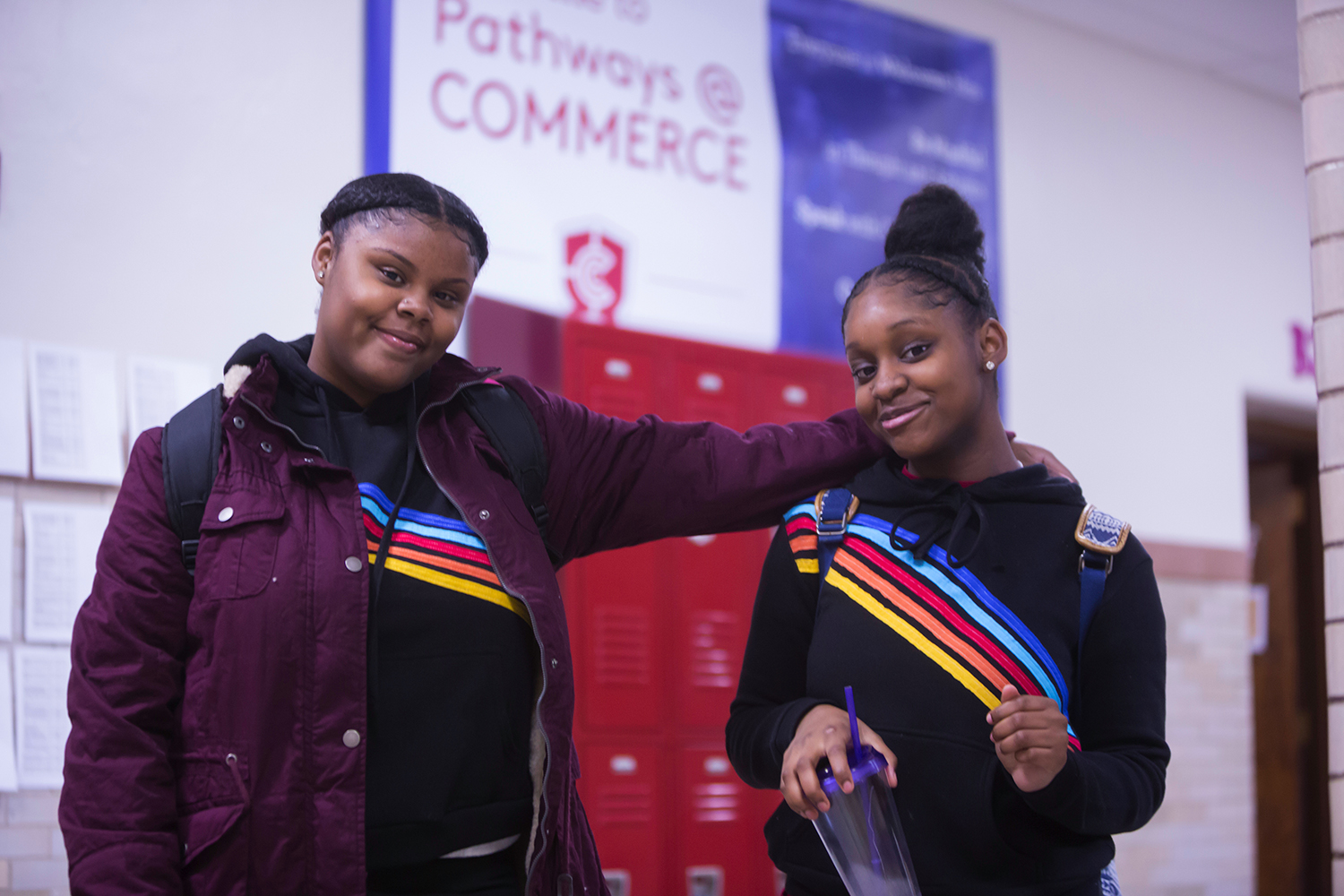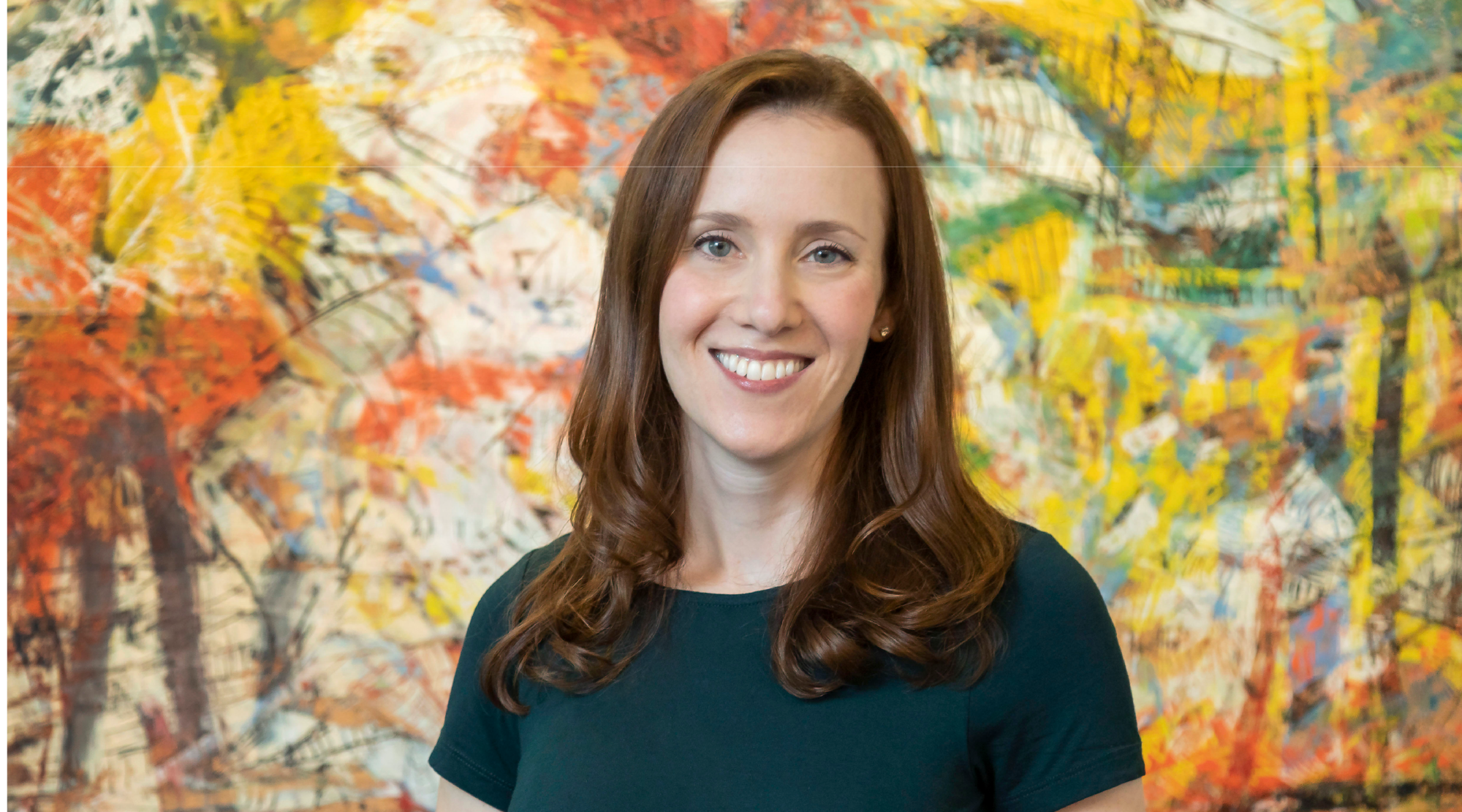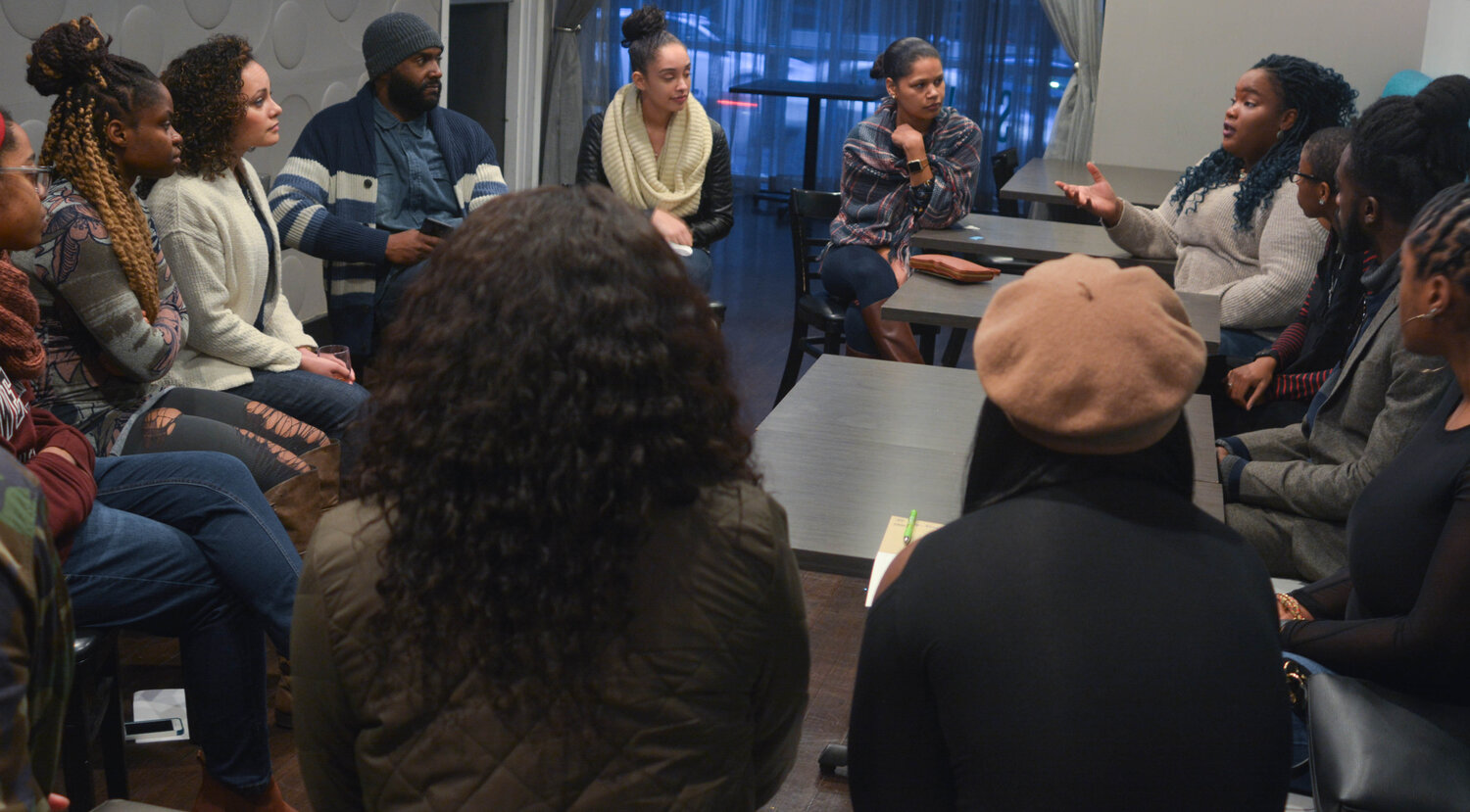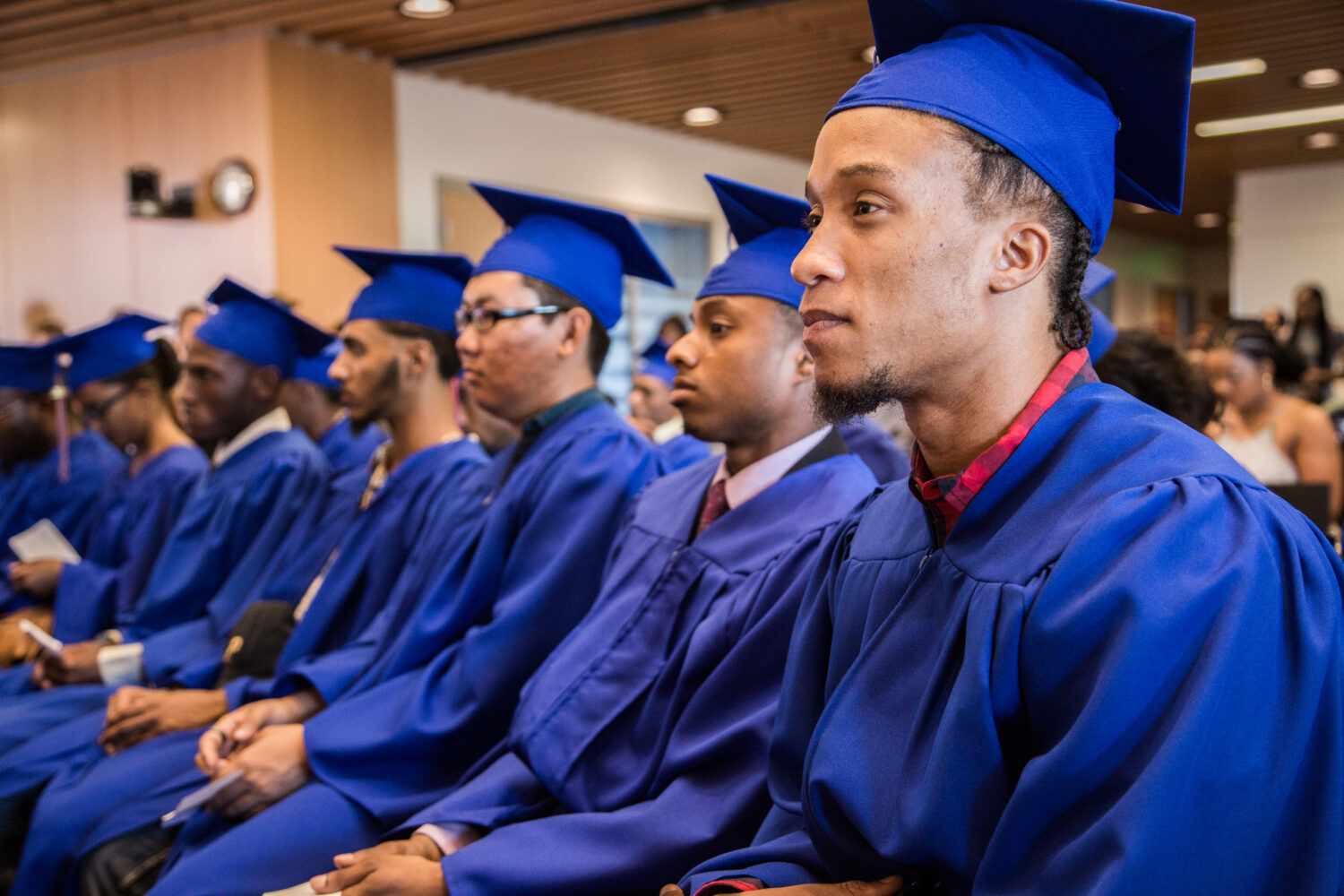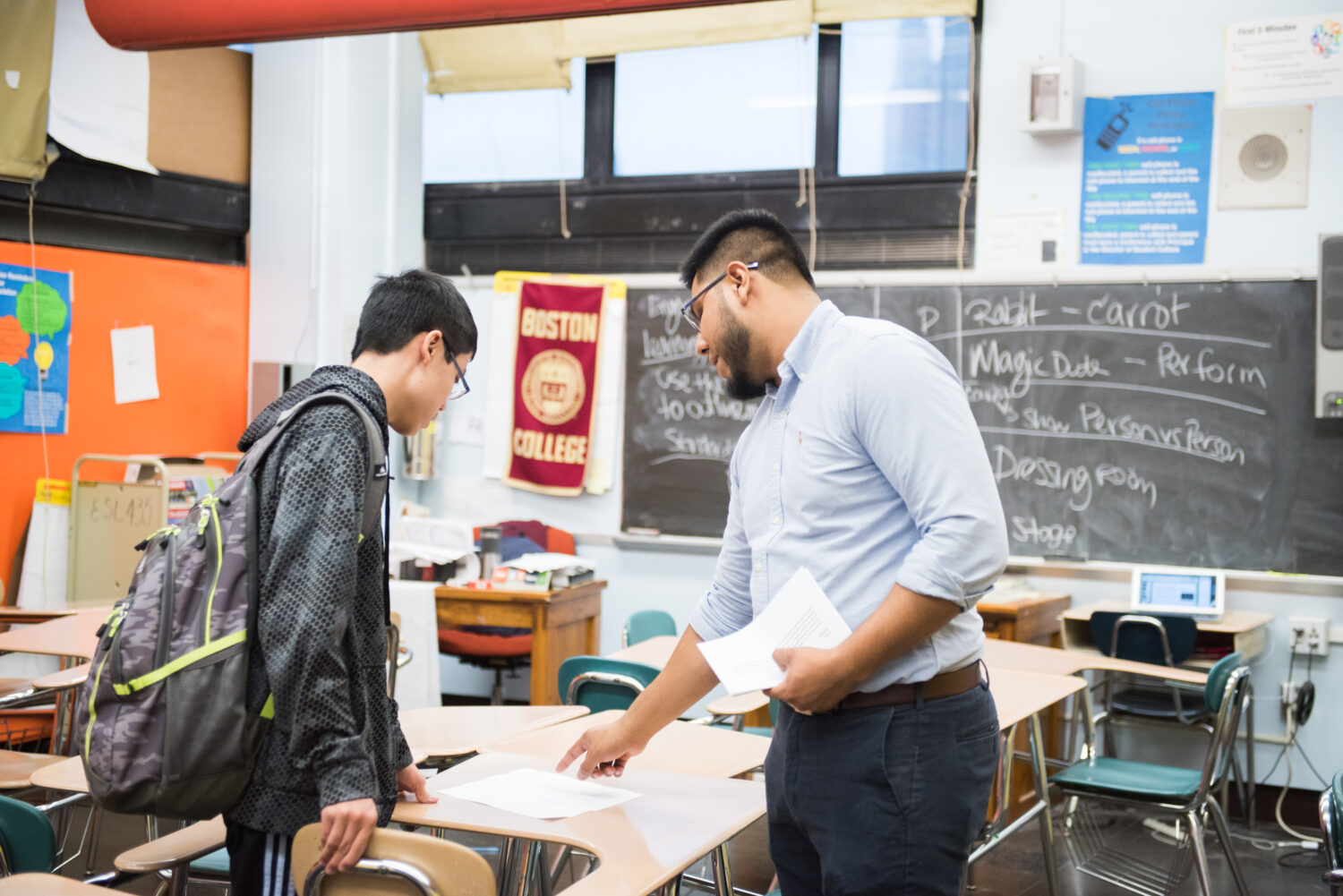As this school year draws to a close and school teams plan for the coming year, Barr’s education team, in partnership with our grantees, has been considering this question and the possibilities that lie ahead. Our grantee partner schools serve students with a variety of dreams, aspirations, and strengths. We believe schools and districts can only reach a bar of excellence where all students reach their goals when they listen to their students—especially those who have not been well supported by our current systems. Through our work with schools and districts to redesign the high school experience, we’ve continued to learn more about effective ways to elevate high school students’ experiences, perspectives, and ideas. And even more importantly, we’ve been able to witness the impact of deeper listening on high school transformation.
Recently, teams of educators from schools across New England gathered at a Student Summit to focus on centering student voice. They engaged in two days of deep listening to their students to answer those questions around student experience and in-school practices. Each of these teams has a ‘portrait of graduate’—a framework for reimagining what the high school experience could and should be for young people—that serves as their north star for decision-making. At the Summit, teams were given the following prompt: “If our Portrait of a Graduate says X, and students are telling us Y, that means we need to change Z.” Here are some examples of what emerged from that exercise:
While off-site summits like these can be deeply fruitful, there are also strategies that can be implemented on site at schools to elevate student voice.
One such strategy is inviting students to participate in (or lead!) staff professional development, common planning time, or department meetings. At a recent staff professional development day, Peabody Veterans Memorial High School focused on unpacking their draft instructional model—a tool developed to outline what high-quality learning and teaching looks like. Students and teachers participated in a “virtual learning walk” together, where they watched videos of classroom instruction at their school and debriefed what they saw in relation to the instructional model. Teachers reflected on their own practice and students weighed in with their perspectives and experiences—sometimes challenging teacher perceptions in important ways that resulted in teachers pausing to reexamine their assumptions and consider updates to what they do in their classrooms.
Monument Mountain Regional High School established a Student Adult Advisory Board (SAAB) as a key decision-making body to guide policies and practices in their school. Students organize into subcommittees based on self-identified topics, working side-by-side with adults to make progress on important issues that affect their school experience. A few examples of subcommittee focus areas include proficiency-based grading policies, communications, and school culture. The current structure of the SAAB is the result of years of intentional learning and work to elevate student voice in meaningful ways—as the school says, to “become a culture, not a club”. This phrase reflects Monument Mountain’s commitment to making sure student voice is a core part of how they function as a school, rather than being seen as an afterthought or a “nice-to-have.” Some of the important steps they’ve taken over the years to set up a high-functioning group included dedicated time to break down traditional silos and roles and moving the SAAB meetings to take place during the school day rather than after school to increase the diversity of students who are able to participate. The group is also made up of student representatives from each Crew (advisory) class as another way to ensure more equitable representation.
These examples demonstrate what many educators, education leaders, and community advocates have long known. Deeply listening to young people, co-creating solutions with them, and following through on those ideas can help shape school experiences that truly work for all students.
